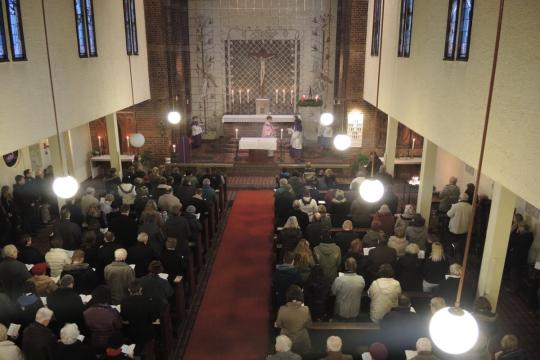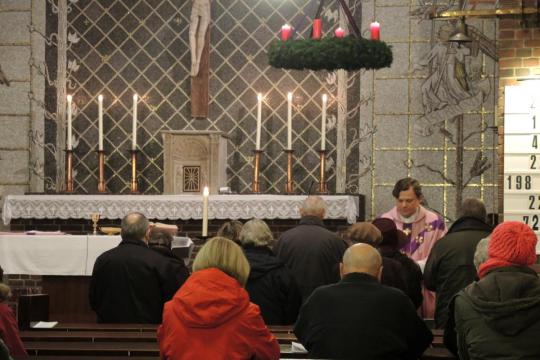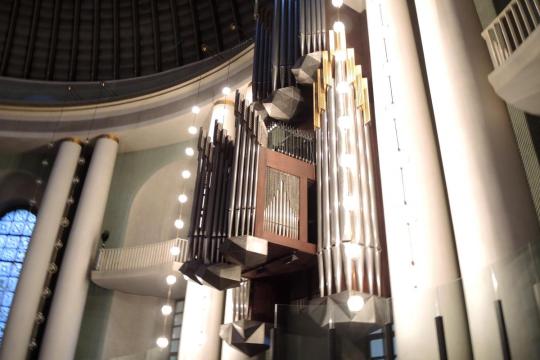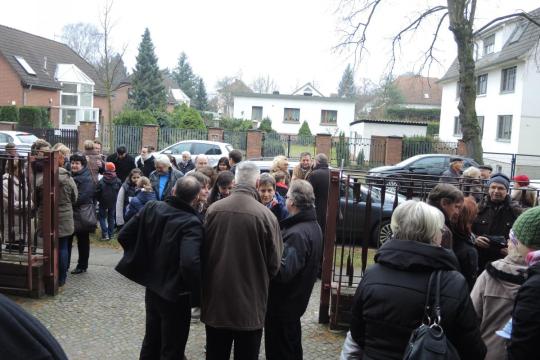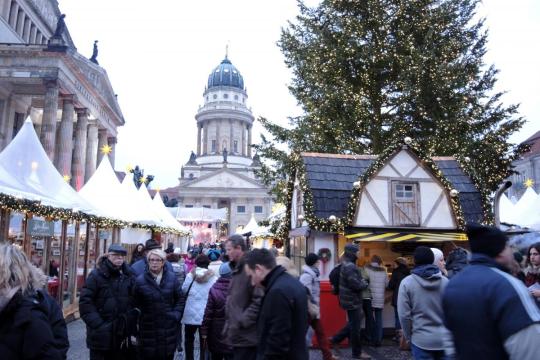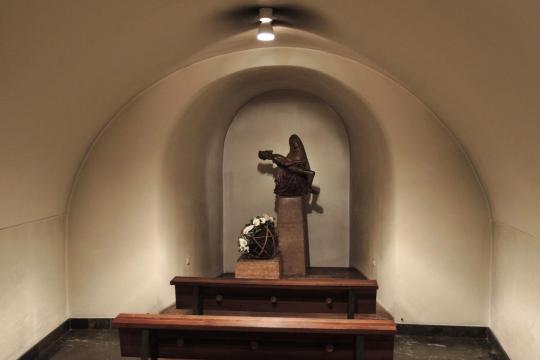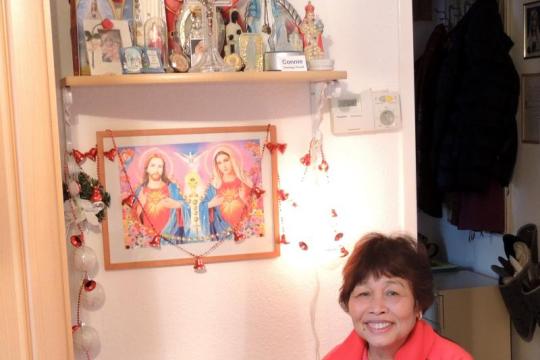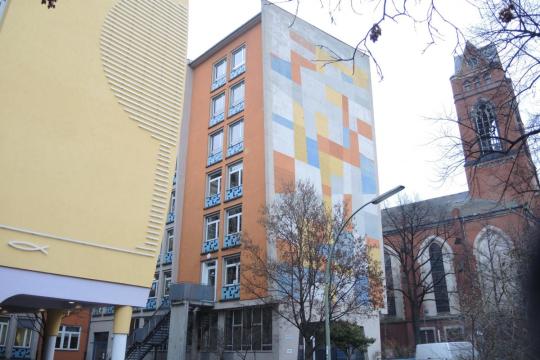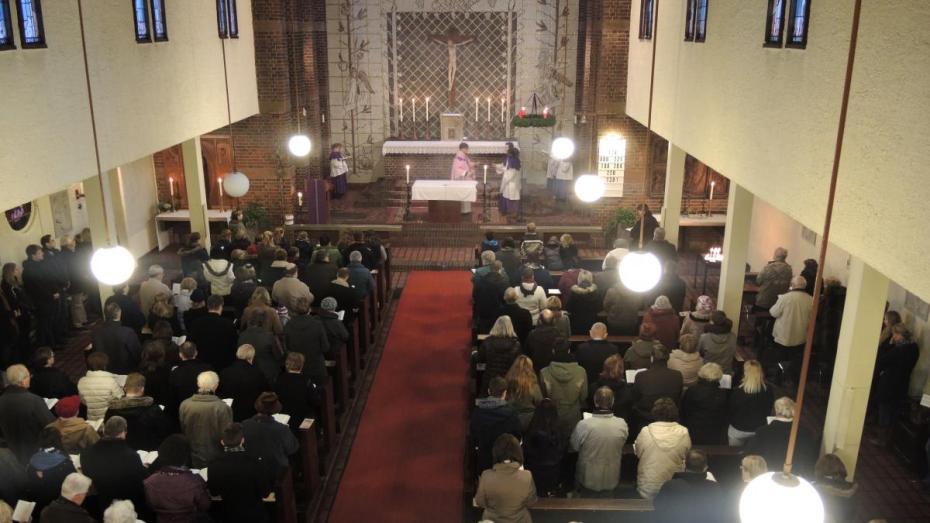
Germany is the birthplace of the Protestant Reformation, but for centuries it has been divided religiously between a majority Catholic south and west, and a majority Protestant north and east. In 1950, Protestants represented almost 60% of the population and Catholics 37%, but according to church rolls today, 30% of Germans are Catholic, 30% unaffiliated, 29% are Protestant and 10% are other religions. Residents of territory in the former East Germany are religiously affiliated at a much lower rate than in the former West Germany.1
Germans define their culture as secular, however those who declare their religion to the state are charged a church tax. The German bishops' conference estimated in 2017 that a little over 10% of Catholics were regular Mass attenders. Some non-practicing Catholics still opt to pay the tax to support the church, while some who self-identify as Catholic do not declare in order to avoid the tax. In 2016, more than 162,000 Catholics unenrolled from Catholic church membership in the tax rolls, a slightly smaller number than the 171,000 who were baptized that year.2
A 2017 Pew survey reported that 7% of self-identified Catholics in Germany said that they pray daily; 12% that they believe in God with absolute certainty, 12% that religion is very important in their lives; 33% that they attend religious services at least monthly, 10% that they try to persuade other adults to adopt their religious views, 29% that they wear or carry religious symbols. These numbers are quite comparable to figures for their Protestant co-nationalists.3
Berlin, which is covered here, is its vibrant, cosmopolitan capital city, a mecca for young people and artists, and a global city that attracts immigrants from around the world. Catholicism is a minority religion in the capital. Read more...
- 1Jonathan Evans, "Once a majority, Protestants now account for fewer than a third of Germans" February 12, 2019.
- 2CNA Deutsch, Über 160.000 Austritte, weniger Priester und Sakramente: Kirchenstatistik 2016 vorgelegt
- 3Jonathan Evans, "Once a majority, Protestants now account for fewer than a third of Germans" February 12, 2019.
National Demographics
- 1 United Nations, Department of Economic and Social Affairs, Population Division, World Urbanization Prospects: The 2018 Revision, Online Edition (New York: United Nations, 2018).
- 2 United Nations, Department of Economic and Social Affairs, Population Division, International Migrant Stock 2020 (New York: United Nations, 2020).
- 3 Data as of 2021. United Nations Office on Drugs and Crime, "Intentional Homicide," United Nations, Accessed April 9, 2024; United Nations Office on Drugs and Crime, Global Study on Homicide 2023 (Vienna: United Nations, 2023).
- 4 "2023 Corruption Perceptions Index," Transparency International, Accessed April 9, 2024.
- 5 United Nations Children's Fund, The State of the World's Children 2023 (Florence: UNICEF Innocenti – Global Office of Research and Foresight, 2023).
- 6 International Telecommunication Union, "Individuals using the Internet (% of population)," The World Bank, Accessed April 24, 2024.
- 7 Poverty and Inequality Platform, "Poverty headcount ratio at $2.15 a day (2017 PPP) (% of population)," The World Bank, Accessed April 24, 2024.
- 8 World Economic Forum, Global Gender Gap Report 2023 (Geneva: World Economic Forum, 2023).
- 9 As Pew describes it, "Government restrictions on religion include laws, policies and actions that regulate and limit religious beliefs and practices. They also include policies that single out certain religious groups or ban certain practices; the granting of benefits to some religious groups but not others; and bureaucratic rules that require religious groups to register to receive benefits." As noted on pp. 45-47 of the report, the index summarizes data from 19 sources. The index does not differentiate whether the laws are directed toward Catholics. Pew Research Center, Globally, Government Restrictions on Religion Reached Peak Levels in 2021, While Social Hostilities Went Down (Pew Research Center, 2024).
- 10 As Pew describes it, "Social hostilities include actions by private individuals or groups that target religious groups; they also include actions by groups or individuals who use religion to restrict others. The SHI captures events such as religion-related harassment, mob violence, terrorism/militant activity, and hostilities over religious conversions or the wearing of religious symbols and clothing." As noted on pp. 45-47 of the report, the index summarizes data from 19 sources. The index does not differentiate whether the hostilities are directed toward Catholics. Pew Research Center, Globally, Government Restrictions on Religion Reached Peak Levels in 2021, While Social Hostilities Went Down (Pew Research Center, 2024).
Catholic Demographics
These statistics are derived from the Vatican's official publication, Statistical Yearbook of the Church 2022 (Vatican City: Librera Editrice Vaticana, 2024). The numbers may differ from data reported by other sources on this site.
